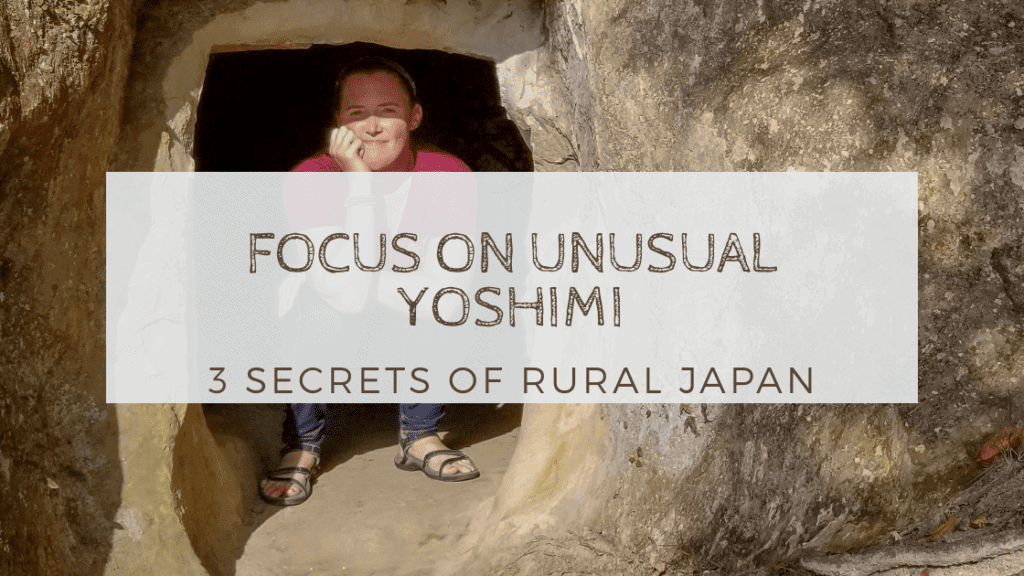Most probably wouldn’t think of Saitama Prefecture as rural. Being located adjacent to Tokyo Prefecture, many residents commute into the city. Hell, some of them commute to the prefecture I call home, Kanagawa. However, the village of Yoshimi most definitely is with a population of barely 20,000.
Located 1.5 hours from central Tokyo, it makes an easy day or half day trip, depending on how much time you want to spend. Better yet, tie it with a trip to Kawagoe.
Why am I telling you to go to some random little village in the middle of nowhere? Honestly, because one of these three is one of the oddest places I’ve been to in Japan. And sometimes, odd is good.
Yoshimi Hundred Caves (吉見百穴)
Yes, that’s its actual name. City Name – Hundred – Caves. Well, actually, I normally associate “穴” (あな, ana) with one of its other meanings. A “hole”. Which is pretty fitting in this case. Due to the resemblance to the ancient city in Turkey, it is sometimes referred to as “Japan’s Cappadocia”.
Remember how I mentioned Japan has a thing with the number 100? There are 219 of these holes. But it’s Japan! We’ll just say it’s 100 and call it a day. I was under the impression before visiting that these were little prayer cubbies for Buddhists like what I visited at Taya Caves (田谷の洞窟)…Nope!
So what are they?
They are burial tombs. And not just any burial tombs but for the prestigious and their families. It makes you wonder what they did with the common folk (for reference, Japan nowadays cremates nearly 100% of their deceased). Interestingly, there is speculation these graves may have also contained foreigners.
Listed as a National Historical Monument by the Agency of Cultural Affairs, these cutouts in the rock date from the end of the Kofun period around the 6th century. Some are claustrophobically small and tight. There are larger ones, that can fit a fair amount of (alive) people in them.
That was by design. The closure for these spaces was moveable so that they could later fit more people inside!

WWII Secrets as well
Under the mountain, there are GIANT caves from near the end of WWII. Which is super sneaky as the graves above helped camouflage this. However, it did hurt some of the structural integrity and there are some collapses above. You can only go a short distance into these WWII caves but that still gives you a good feel for the size.

Dark caves lead to a perfect spot for rare plants
The area is also a National Natural Monument due to a rare species of luminescent moss called 光苔, ヒカリゴケ,
Iwamuro Kannon Hall 岩室観音堂
On your way to the Yoshimi caves, you may have noticed an interesting looking gate on your right. The literality that is the Japanese language strikes again. Iwamuro (岩室) is a word for a cave. Emphasis on “a word” as there are no less than 6 in Japanese. The story goes, a 弘法大師, (which basically translates to a “Great teacher spreading Buddhist Teachings”) put a statue of Kannon in a cave at this spot.
That was all during the time of the castle (more on that in a second), at least some of it was destroyed. and what is here now is thought to date to the Edo Period.
It has 88 Buddha statues sitting in a cave (they didn’t just make that part up at least!) which coincides with the 88 temple pilgrimage in Shikoku. Shikoku isn’t the only one with a pilgrimage route! How about one with 33 stops? Count yourself at 32 now.
If you want to be adventurous, take the slightly treacherous route behind the temple up to the castle ruins.
Matsuyama Castle Ruins 武蔵松山城跡
No, this is not the same Matsuyama Castle that is my utmost favorite in Japan. Go back to my rants about the lack of syllables in the Japanese language. Therefore, this one is sometimes called 武州松山城 (Bushu Matsuyama Castle) or 武蔵松山城 (Musashi Matsuyama Castle) to separate it from my favorite in Ehime Prefecture and Bitchu Matsuyama in Okayama Prefecture.
Why didn’t they call it Yoshimi Matsuyama Castle? The first nickname is interesting as it means “warring states” castle. Almost as if they are talking themselves up. The second, Musashi, is the old name for what is now Tokyo and Saitama area. Either works, I like the latter.

Documents are limited but it is estimated the castle existed at the end of the 1300s making it SUPER old. Records from 1537 state that Edo and Kawagoe Castle Clans attacked Matsuyama (trying to vie for
Getting to Yoshimi
Lucky for you, all three of these things are in the same area of town! I kid, Yoshimi is super small, remember? Hyperdia is your friend when looking to ride the train and there are several routes that will work.
The closest station is Higashi-Matsuyama. From there your options are to take the bus or walk. Personally, I prefer to walk when I have a choice.
If it’s raining though, I feel you on public transit! The bus stop at the Higashi-Matsuyama station is in English, you are looking for the bus bound for Menkyo Center (免許センター行, timetable here), so don’t worry about that but familiarizing yourself with the Japanese is helpful!
Pin this for later

